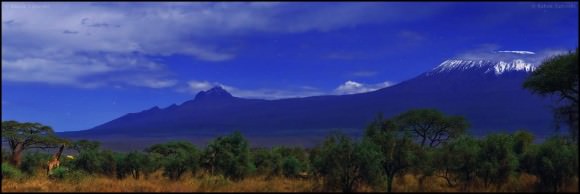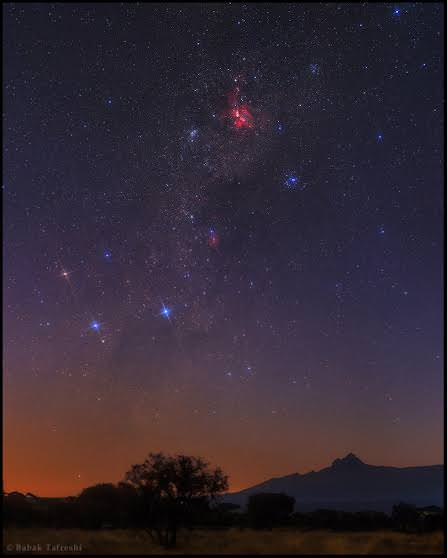You might find yourself humming Paul Simon’s “Under African Skies” after seeing these stunning images! The World At Night photographer Babak Tafreshi has just returned from a trip to Kenya and has amassed a gorgeous collection of astrophotography showing Mt. Kilimanjaro by night (and some in the day, as well). Below you can see a panoramic view of Kilimanjaro in the moonlight, flanked by giraffes (can you spot the zebra, too?) and starry skies.
“His path was marked by the stars in the southern hemisphere
and he walked his days under African skies…”

See more great images from Babak’s trip at the Dream Views website here.
Want to get your astrophoto featured on Universe Today? Join our Flickr group or send us your images by email (this means you’re giving us permission to post them). Please explain what’s in the picture, when you took it, the equipment you used, etc.


Nzurisana, bwana!
Why do people put these obnoxious fake spikes at stars?
If you have a Newtonian telescope with a secondary mirror, it is usual to suspend it from two sets of wires. Diffraction off these wires probably gives the cross on the stars you see here. It is possible to digitally filter out this artefact, but it is probably on the recorded image.
I have Newtonian telescopes (8″ and 12″) and I know what diffraction spikes are, but to add them in photo with software or with wires in front of lens is lame thing in my book.
AMAZING!!!